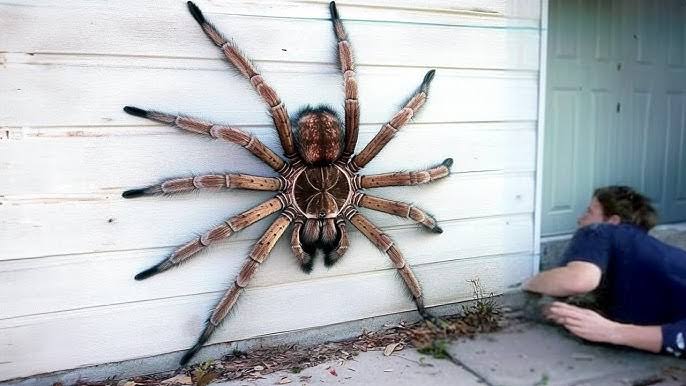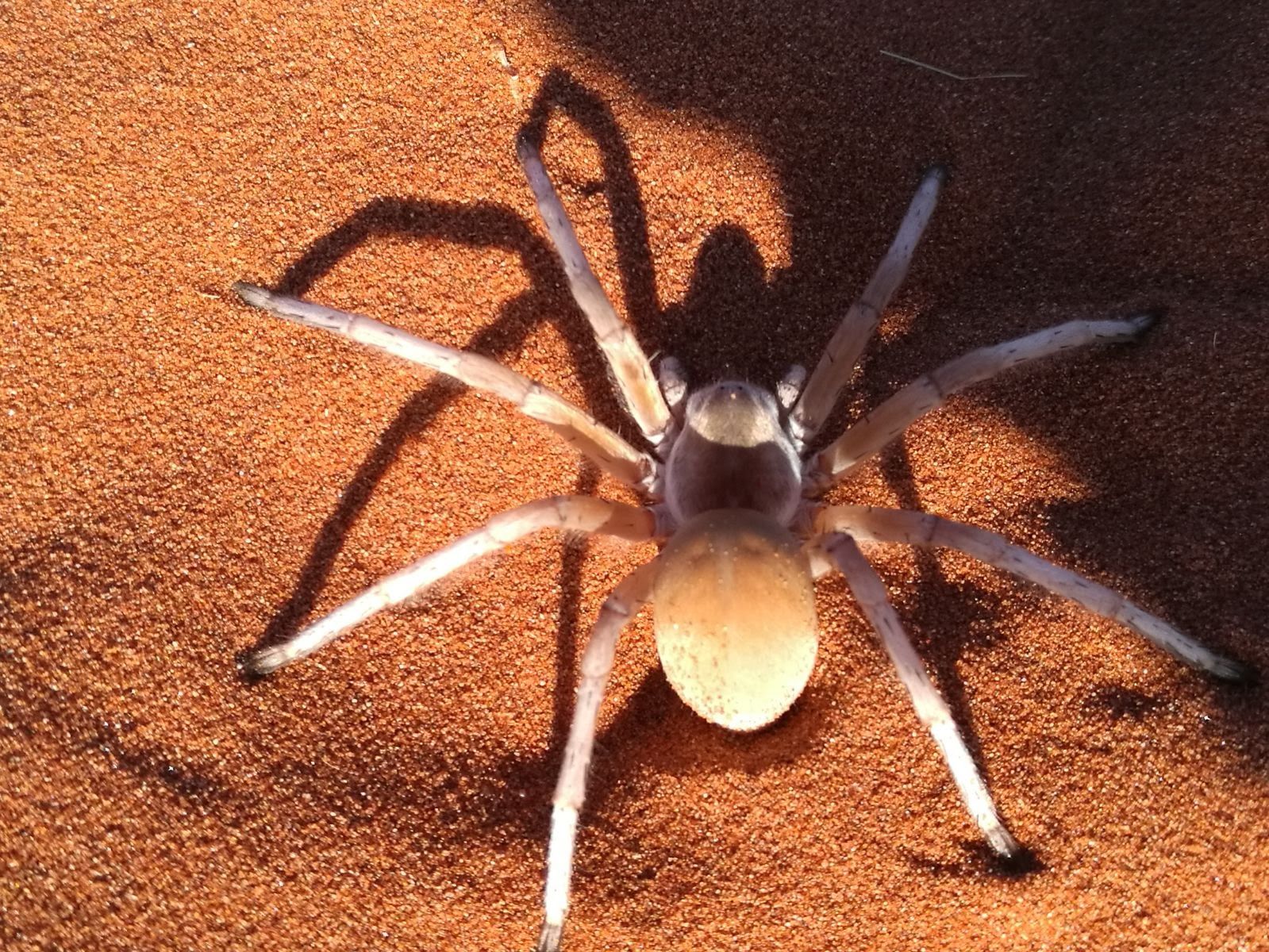Spiders, with their complex webs, deadly bites, and vast array of species, are among the most fascinating creatures on Earth. A small number of spiders can be quite frightening in size, while the vast majority of spiders are harmless and small. The sheer size of these giant spiders is enough to attract observers, and they also serve as a living example of the diversity seen in the spider realm. These spiders have the longest legs and largest bodies of any creature. This article will examine the top 10 largest spiders on our planet, giving a brief description of each and discussing the awe-inspiring effects of their unique traits.
While they might not pose a direct threat to humans, the mere size of these spiders often leads to fascination and fear. For instance, the Goliath Birdeater, a spider that can weigh more than 6 ounces and span up to 12 inches, is the largest spider by mass and is often regarded as one of the most impressive examples of arachnid gigantism. Another example is the Huntsman Spider, which is known for its incredible leg span, reaching up to 18 inches in some cases.
These Are The Top 10 Biggest Spider In The World With Size
1. Goliath birdeater
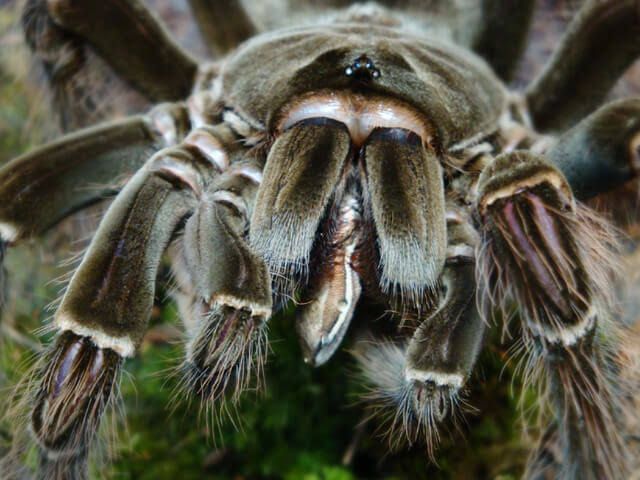
Size – 175g and up to 30 cm leg span
Goliath birdeaters, the biggest spider on Earth, comes in at number one on our list. This spider, which originates in the northern South American rainforests, is the longest (13 cm) and heaviest (up to 175 g). When it comes to leg spread, the next spider on the list is just slightly shorter than this heavyweight. An engraving from the 18th century showed a distinct species of tarantula devouring a hummingbird, which led to the entire genus Theraposa being called “bird eaters.” This is where the name came from. Worms, amphibians, and big insects make up the bulk of this species’ diet, but birds are a rare exception.
2. Giant huntsman Spider
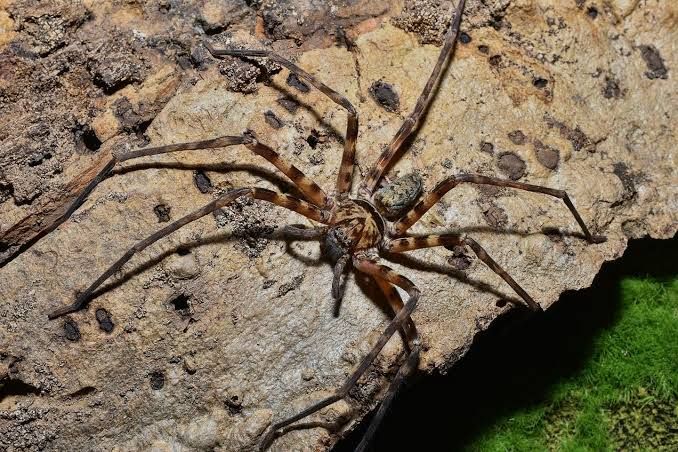
Size – 167g, 30cm leg span
This species, which is indigenous to the Southeast Asian country of Laos, is equally remarkable. With a staggering 30 centimeters from tip to toe, the huge huntsman spider has the longest legspan of any spider in the world. While there have been goliath birdeater individuals that have come close, the average size of giant huntsmen is what gives them the label. It has been noted that this species engages in cannibalism, with the bigger females eating the males after mating. Though it seems strange to us, this is actually quite typical spider behavior that provides a nutritional boost to the female, which helps with reproduction.
3. Brazilian Salmon Pink Birdeater
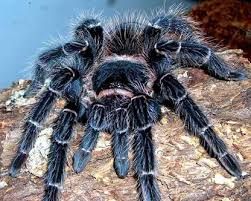
Size – Leg span of up to 28cm
The following species is not just large (it weighs roughly the same as a banana), but also somewhat difficult to swallow. Their native habitat is the Brazilian jungle, but you may find these adorable creatures as pets all across the globe. Their submissive nature is the reason behind this. On the other hand, they aren’t always chill and will bite or fling unpleasant barbs at a would-be predator if they feel threatened.
4. Brazilian Giant Tawny Red Tarantula
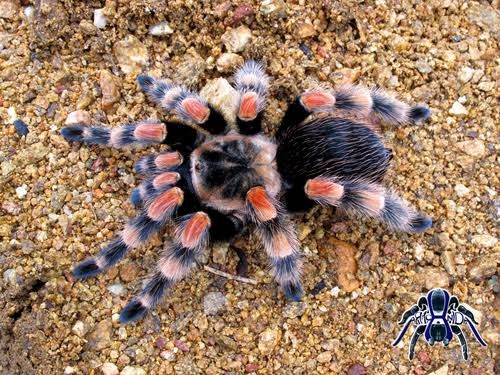
Size – leg span of around 23cm
Being one of the longest-lived tarantula species (living up to 30 years!), the glossy, all-brown Brazillian Giant Tawny Red tarantula is another species that is highly prized as a pet. Its leg span can reach over 23 cm. Having such attractiveness, though, can hurt populations in the wild. The illegal tarantula trade, which includes this species, is a lucrative business that drives poaching of wild spiders to meet demand, which has a negative impact on local populations.
5. Chaco Golden-Knee Tarantula
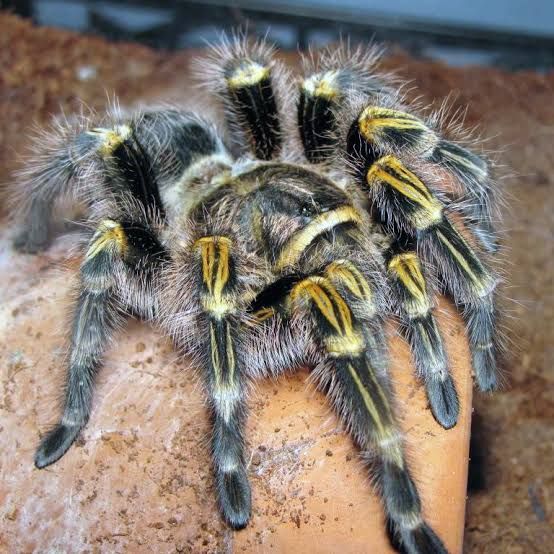
Size – leg span of up to 20.3 cm
An Elegant Spider with a Golden Flair: the Chaco Golden-Knee Tarantula Amazing and unique to the dry subtropical parts of South America, the Chaco golden-knee tarantula (Grammostola pulchripes) is native to Bolivia, Paraguay, and Argentina’s Chaco region. This tarantula is a favorite among collectors and arachnophobes due to its enormous size and beautiful golden markings on its knees. Body Characteristics The enormous size of the Chaco golden-knee tarantula is one of its most distinctive characteristics. This tarantula is one of the largest species in the family, with a leg spread that can exceed 20.3 cm (about 8 inches). The golden-yellow patterns on its leg joints are the most distinctive feature, yet the tiny layer of hairs covering its body can be any color. It is one of the most stunning tarantulas due to its dark brown or black body and especially noticeable golden highlights.
6. King Baboon Spider
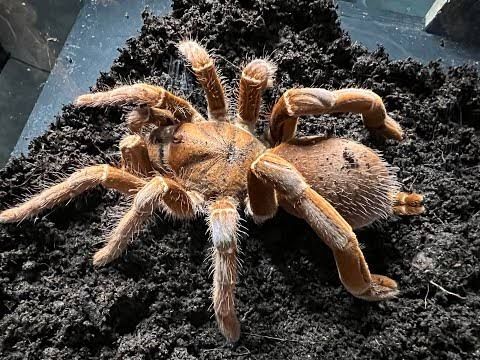
Size – leg span of up to 20 cm
The King baboon spider is another tarantula that stands out due to its velvety, rusty-brown coloring. This tarantula has an unusual way of protecting itself; it is native to Kenya, Tanzania, and Uganda. It is the first spider on our list that is African. These spiders employ stridulation, in addition to their terrible venom bite, to ward off predators. They can make a raspy hissing sound by rubbing the hairs on their front legs together, which should frighten anyone in the vicinity.
7. Colombian Giant Tarantula
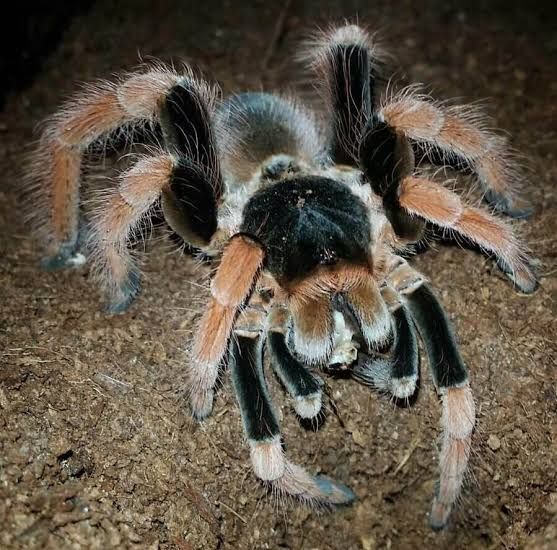
Size – leg span of around 20cm
Despite its massive size, the timid Columbian gigantic tarantula prefers to avoid conflict by running and hiding. As a first warning, they bobble up and down; to confuse an assailant, they spin in circles; and to kick out, they utilize their spiked back legs. Their defense techniques are fascinating, nevertheless. The Brazilian and Colombian tropical rainforests are home to this species.
8. Face-sized Tarantula
Size – leg span of up to 20cm
Having a name like this must be the most terrifying thing ever! Given that its legs can extend up to 20 centimeters, the moniker seems fitting. Hopefully, you’ll never have to find out… Venom is used by this Sri Lankan spider, which is a member of the tarantula family, to incapacitate and devour its prey, which comprises of tiny rodents, birds, snakes, and lizards. But if you ever get one on your face, don’t worry the venom isn’t deadly to humans.
9. Brazilian Wandering Spiders
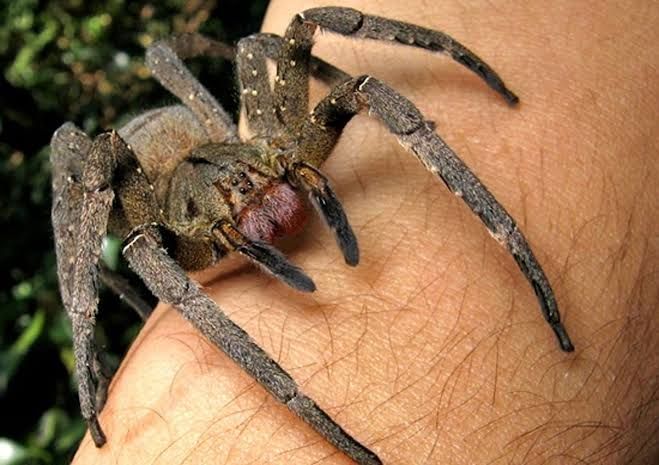
Size – some can reach up to 18cm in leg span
Spiders belonging to this genus can vary greatly in size, with some reaching a maximum of 18 cm in leg span and 5 cm in body length. Although they are more commonly known as Brazillian wandering spiders, you can really find these spiders all the way down South America, from Costa Rica and beyond. Because of their preference for dark, damp habitats, such as banana plants, these spiders are sometimes known as banana spiders. This has also resulted in their sporadic appearance in international banana exports. A stray spider bit an Englishman in 2005 after it had been concealed in a box of bananas sent to his bar.
10. Sand-Welling Huntsman Spider
Size – leg span of up to 14cm
This enormous and unusual spider has only just been found in the sand dunes of Jordan and Israel. In 2007, an Israeli arachnologist was the first to describe it. These spiders build elaborate burrows beneath the sand dunes, complete with sand and silk trapdoors that swing open to keep out the sun and predators. Mining operations are quickly eroding the dunes where these animals reside, casting doubt on their long-term viability. Important habitats can be found in sand dunes.
